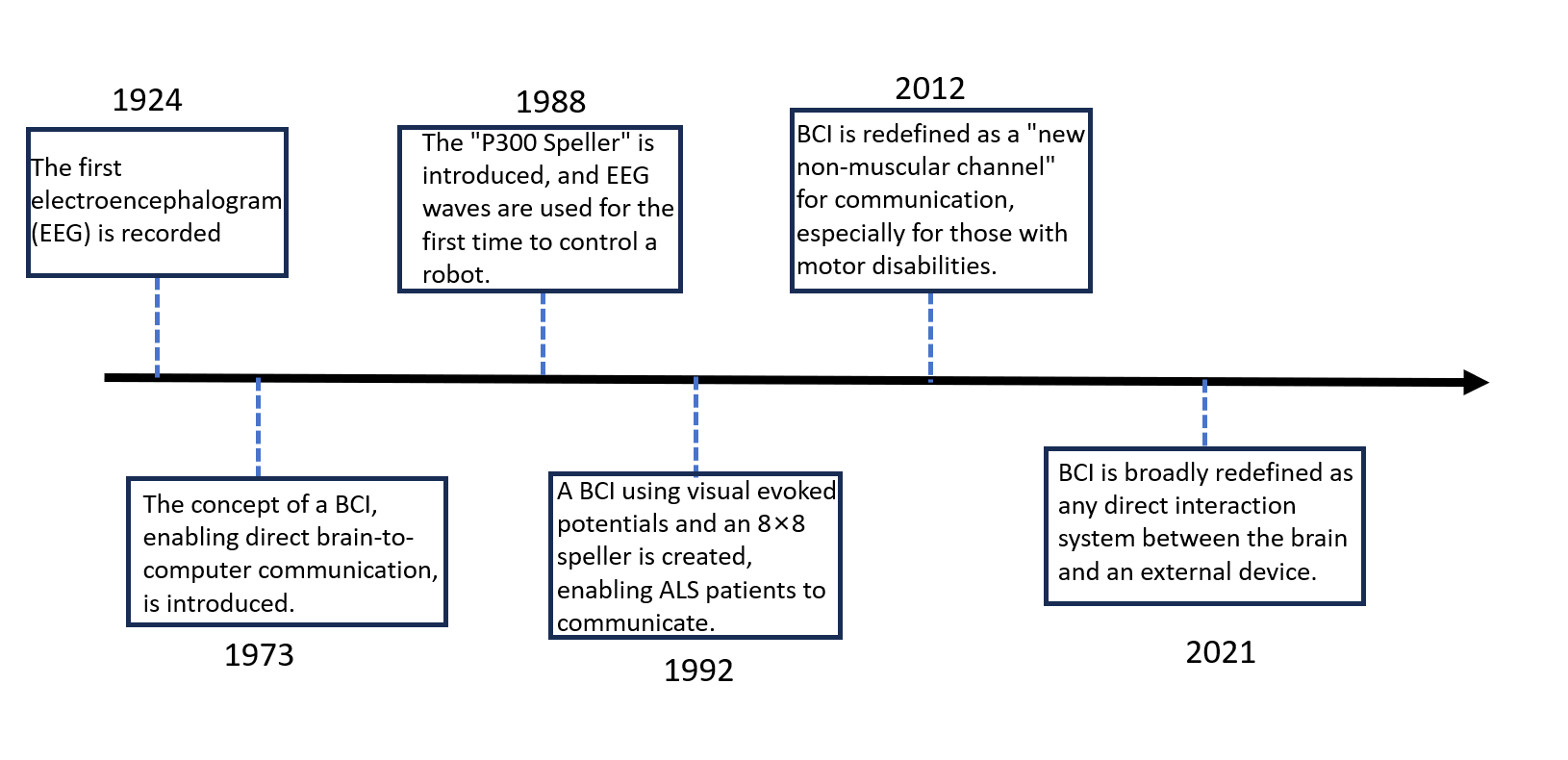Brain-Computer Interfaces
The Future of Human-Machine Interaction
Brain-Computer Interfaces (BCIs) are a rapidly evolving technology that bridges the gap between the human brain and external devices, enabling novel and direct communication pathways. This field is creating unprecedented opportunities for revolutionizing medicine, human capabilities, and the ways we interact with the world.

The concept of BCIs has its roots in the pioneering work of the early 1970s, particularly Jacques J. Vidal's seminal article "Toward Direct Brain-Computer Communication"[1]. Vidal, at the Brain Research Institute, UCLA, set forth the foundational ideas that underlie modern BCI systems and spurred decades of innovation in the direct interpretation of neural signals.
Building upon these early insights, BCI technology has grown to encompass sophisticated systems capable of capturing and interpreting brain signals. By translating these signals into digital commands, BCIs can control computers, prosthetic limbs, and an array of external devices. Modern BCIs leverage cutting-edge signal processing, advanced algorithms, and machine learning methods to decode and convert neural activity into meaningful outputs[2].
Among the most impactful applications of BCIs are those in healthcare. BCIs offer renewed autonomy and communication channels for people with severe physical disabilities—such as spinal cord injuries or neurodegenerative diseases—by allowing them to operate computers or devices using only their brain activity. For example, individuals with amyotrophic lateral sclerosis (ALS) can use BCIs to type messages or control a wheelchair, restoring a sense of independence that might otherwise be lost[2].
Beyond restoring lost function, BCIs are also being explored for augmenting human potential. Research is underway to harness BCIs for cognitive enhancement, memory improvement, attentional control, and even brain-to-brain communication. Such advancements could fundamentally transform how we learn, collaborate, and process information[2].
However, significant challenges remain. Ensuring reliable and accurate interpretation of brain signals is a core technical hurdle, and as BCI technology enters broader use, ethical considerations regarding privacy, security, and potential misuse are becoming more acute[3].
Looking forward, the integration of BCIs with emerging technologies like artificial intelligence (AI) and virtual reality (VR) has the potential to unlock novel and transformative applications. Imagine controlling your home, navigating virtual worlds, or communicating across great distances with nothing more than your thoughts.
In summary, Brain-Computer Interfaces represent a profound technological frontier with the capacity to reshape human life. Continued research—grounded in the foundational contributions of visionaries such as Vidal—will be essential to unlocking the full promise of BCIs and responsibly addressing the challenges that accompany their progress.
References & Notes
- Vidal, J. J. (1973). "Toward Direct Brain-Computer Communication." Annual Review of Biophysics and Bioengineering, 2, 157–180. [PDF]
- Wolpaw, J.R., Birbaumer, N., McFarland, D.J., Pfurtscheller, G., & Vaughan, T.M. (2002). "Brain-Computer Interfaces for Communication and Control." Clinical Neurophysiology, 113(6), 767–791. [PDF]
- Wang, Y., Jiang, C., & Li, C. (2023). "A Review of Brain-Computer Interface Technologies: Signal Acquisition Methods and Interaction Paradigms." arXiv preprint arXiv:2303.12626. [Open PDF]